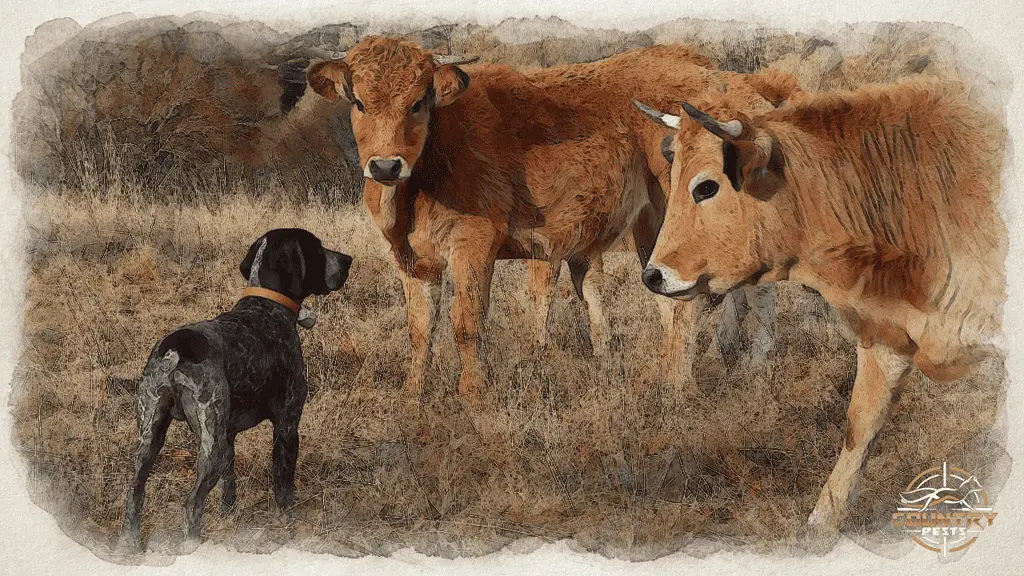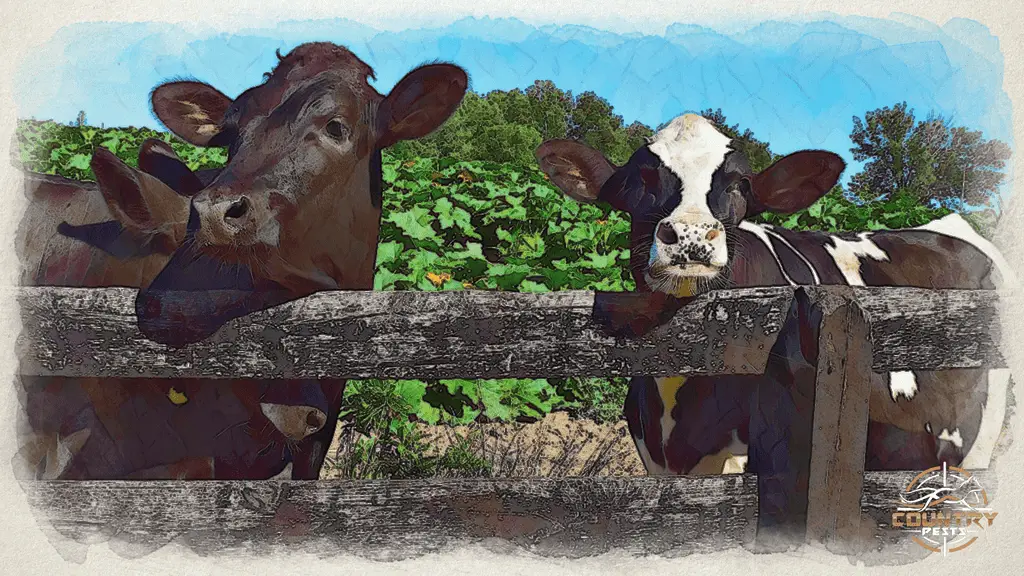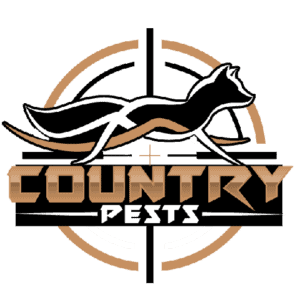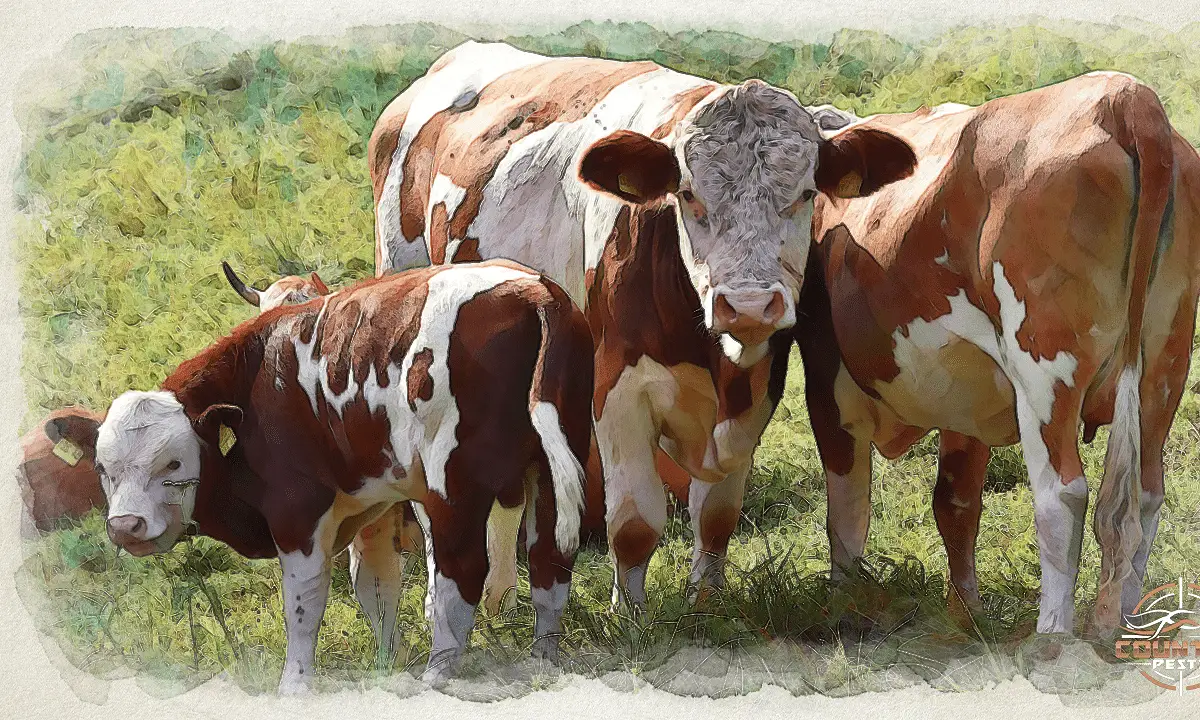Living in a farm country means that cows will occasionally come into your yard. To protect plants and other structures, you will need an effective strategy to keep cows out of your yard.
It is possible to keep cows out of the yard without fences, but it takes time, patience, and persistence. Using a combination of these methods can help you achieve a lawn that is free of cows. Many of these methods need to be used by the farmer. They are also more successful if you have a small number of cows trying to enter your yard. A larger herd will probably need strong fencing to keep them out.
- Electric Wire
- Eliminate the “desirables” in your yard
- Woven Wire Fence
- Wooden Fence
- Living Fence
- Barbed Wire Fence
- Use of a Natural Barrier
- Maintain Shared Fences
- Proper Feeding
- Use of Dogs
Usually, this strategy involves understanding cow behavior and leveraging this knowledge to safeguard the yard. This article will guide you on keeping cows out of the yard with and without the use of fences.
Keep Cows Out With A Hot Wire or Electric Fence
An electric fence or a hot wire is probably one of the lowest-cost options for effectively keeping cows out of your yard. But, electric fences can be intimidating for anyone who hasn’t had experience with them.
For information on how to put up an electric fence, check out this article. Electric fences are usually composed of 3 or 4 wires that run along a fence to keep animals in or out. If your main problem is invading cows, then a single hot wire can help to deter them.
It would be best to place the wire about 3 feet high, where cows will run into the wire with their bodies. Cows are usually deterred with 2-3,000 volts, but if your hot wire is ineffective, you can increase it up to 5,000 volts.
An electric fence is not meant to harm or injure an animal, but it is meant to provide enough shock to startle the animal away and keep them from an area.
An electric fence usually needs to have 5 strands to be effective against persistent cows. A single wire is more effective if you keep cows out of a smaller area than if you want to keep cows in an area.
An electric fence requires fewer fencing poles than a woven wire fence or barbed wire fence. A spacing of 16 feet is used when fencing using high-tensile wire.
This is the strongest available fencing option currently on the market. When maintained well, it has a lifespan of up to 40 years.

Eliminate Attractants in Your Yard
There are many reasons cows may be coming into your yard. It’s important to eliminate as many of the attractants as you can to keep them out. Let’s explore the most common reasons why cows come into the yard.
- Eat plants: Cows often love to go after lawn plants because they are different and often taste great. Grass is especially tempting for cows. They will usually taste every kind of plant. However, they usually don’t eat large volumes of plants that are poisonous to them. They tend to avoid plants that are poisonous and native to their area. This may be because the herd teaches young calves which plants to avoid with each generation.
- Find a shade: A shady yard may attract cows, especially if there is edible undergrowth as well.
- To express hunger: Tamer cows may come to your lawn looking for you to ask for food.
- Curiosity: Cows are curious and often like to go exploring. Calves are more likely to venture into the yard than fully-grown cows.
Woven Wire Field Fence
A woven wire fence, also called field fence, is a proven solution to keeping cows in the desired location. Unlike welded fencing, woven fencing is interlacing, so it doesn’t pop apart with pressure. As a result, cows cannot push their heads through the fence to reach plants.
The woven wire fence effectively controls other smaller farm animals like poultry, goats, and sheep.
A woven wire fence for cattle can have a height of 5 to 6 feet. The fence is installed by fitting it on wooden or steel fencing poles at a pole interval of 8 feet. Using a bigger interval may result in a weak fence that will begin to sag. The poles are placed in holes that are 2 feet deep. For the poles to stand firmly, use concrete to fill the holes.
Two strands of wires are fixed to run horizontally one and a half feet from the ground and three feet from the ground to make this fence stronger.
Wooden Fence
You can use a wooden fence to protect your yard from cows. You should note that a wooden fence is not the strongest option. While a wooden fence can protect your lawn for some time, it is not a long-term solution for keeping persistent cows out. But, it can be a great solution for occasional issues.
Design your wooden fence to be strong and to last long. Treating wood can help prevent it from being destroyed by termites, insects, bacteria, and weather elements. Always use thick pieces of wood as they stand a chance when cows apply force.

Living Fence
A living fence is made of trees or shrubs. This type of fence takes time to develop. During that time, you will probably need to put up another fence to keep cows out while your plants grow. Eventually, you can grow a strong live fence that is impenetrable to cows and other livestock.
The strength of a live fence largely depends on the choice of tree or shrub used. When weak plants are used, cows can breach this fence and enter the yard. Recommended trees and shrubs to use for a live fence on a cow farm include cypress, grevillea, bottle brush, and hibiscus.
Be aware that for most types of plants, cows will still nibble or try the leaves. The fence can also act as a shade when the weather is hot and sunny. A live fence is an effective control method as it gives both physical and visual barriers to cows intending to enter a yard.
Barbed Wire Fence
Barbed wire fence is the most widely used type of fence on many farms. It is the cheapest fence to install. Barbed wires are nailed horizontally on wooden poles at a vertical interval of half a foot to one foot.
While a barbed wire fence can prevent animals from accessing your lawn, it can cause injury to cows that make contact with the wire. With a well-made fence, the probability of this happening is very low. There is a larger risk if the fence isn’t well-maintained, and an animal can get tangled in it.
Use of a Natural Barrier
Cows cannot access a lawn raised 90 degrees upwards, with an elevation of up to 6 feet from the ground. Such an elevation would be too steep for cows to scale, making your yard impenetrable.
Maintain Shared Fences
This can be a hot topic, and the laws vary from area to area. Even if you feel that it’s not your responsibility to maintain shared fences to keep cows out of your property, it can still be a good idea to help maintain the fence.
In some states in the United States, open range laws place the responsibility to keep cows off private property on the individual property owners- not on the farmer. In other states, the farmer is responsible for keeping cows off other people’s property.
Although you may feel that cows aren’t yours and you shouldn’t have to spend energy or time keeping them away, that concept may run against the legalities of the situation. By being a good neighbor, discussing the problem, and helping implement the solution, you will probably have better long-term success and corporation from the farmer.
Proper Feeding
The most common reason for cows to come into the yard is to seek plants to eat. Cows are inquisitive. Even so, a well-fed cow is not likely to wander into the yard.
Discuss with the farmer the location and frequency of feeding. Perhaps he is unintentionally feeding the cows close to your property and aggravating the issue of them invading your lawn.
Use of Dogs
Herding dogs are very instrumental in keeping herds of livestock in place. They are effective if you keep a large number of cows.
The best herding dog breeds are Border Collie, Australian Cattle dog, Australian Shepherd, Belgian Sheepdog, and German Shepherd.
These dogs have an innate capability to control the movement of livestock. They channel their predatory nature into a herding behavior. Cows naturally obey the prompts given by the herding dogs.
You can use these breeds of dogs to keep cows off your lawn. The dog will not allow the cows to cross a particular point.
Scaring Cows Away
Every summer when I was growing up, the cows would go past my house on their way to the hills. Our job was to keep the cows away from my mother’s prized and beautiful flower gardens. When cows get into the yard, many people’s first instinct is to pelt them with stones or objects. But, it can injure the cow when the stone or object lands on the eye, nose, or udder. But we were successful, even as children, in keeping cows away from the flowers with sticks that we would tap the cows with when they got too close. We often used the same method to chase alone wondering cow that came into our yard unexpectedly.
You can scare cows off your lawn by squealing or yelling while advancing towards the cows. Wave at them and make yourself big. They will retreat because they hate high-pitched sounds. If your pet dog barks at them, they will also withdraw from the grass as barking is also a high-pitched sound that they hate.
According to research, cows have a perimeter of space around them, which, if you get into, they retreat. This perimeter of space is referred to as the flight zone. Depending on how tame the cow is, the flight zone varies, but it can be as much as 6 feet around. You can scare the cow by approaching it while raising a long stick and making a high-pitched sound.
Conclusion
Cows can be very persistent. For more ideas on keeping cows away from prized flowers and plants, check out this article on 5 tips to keeping cows out of your plants.


